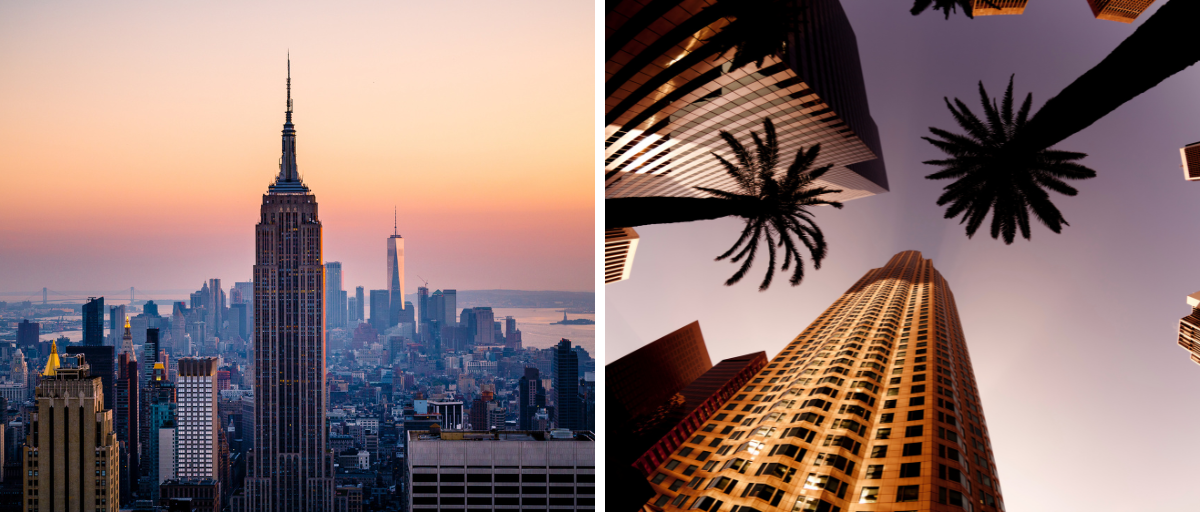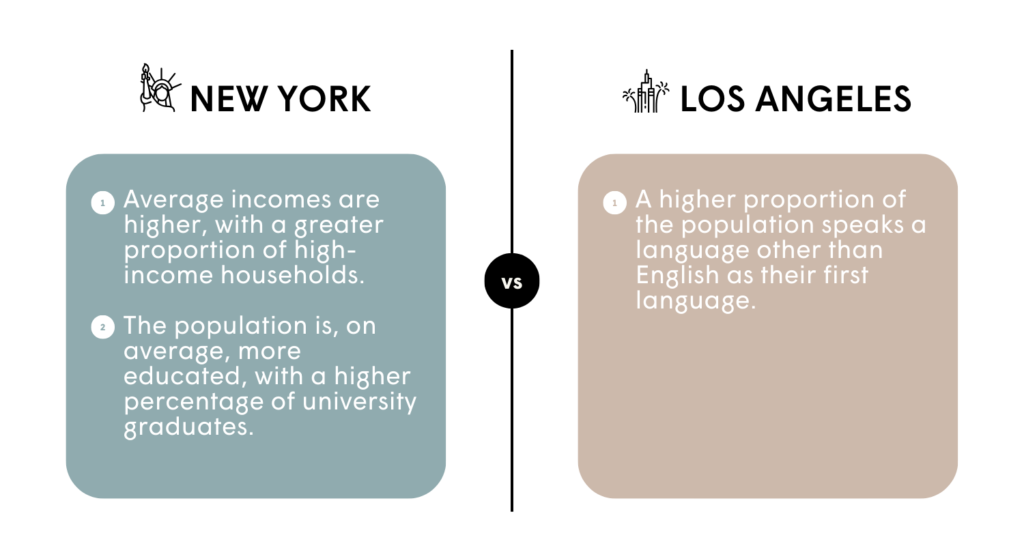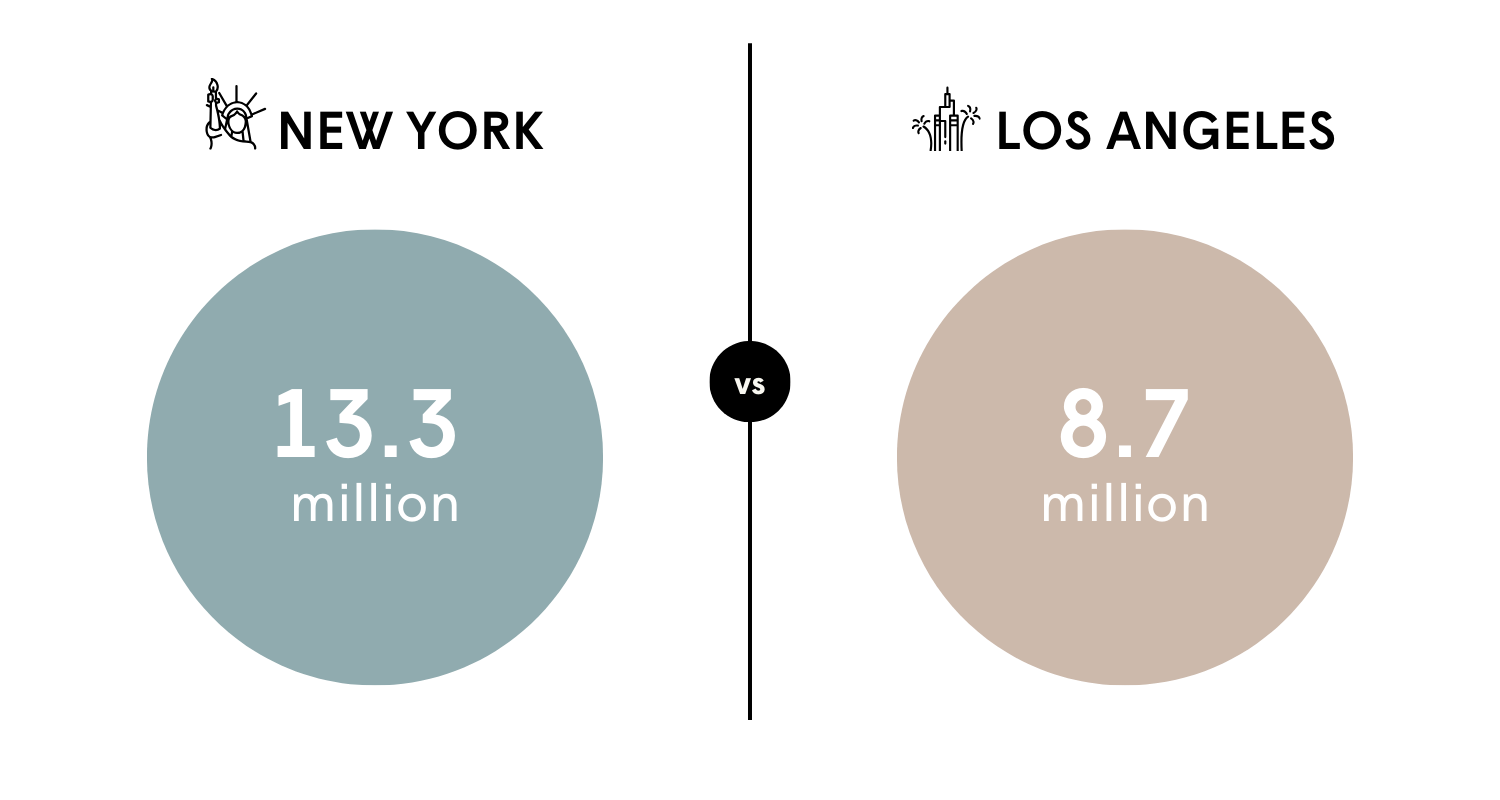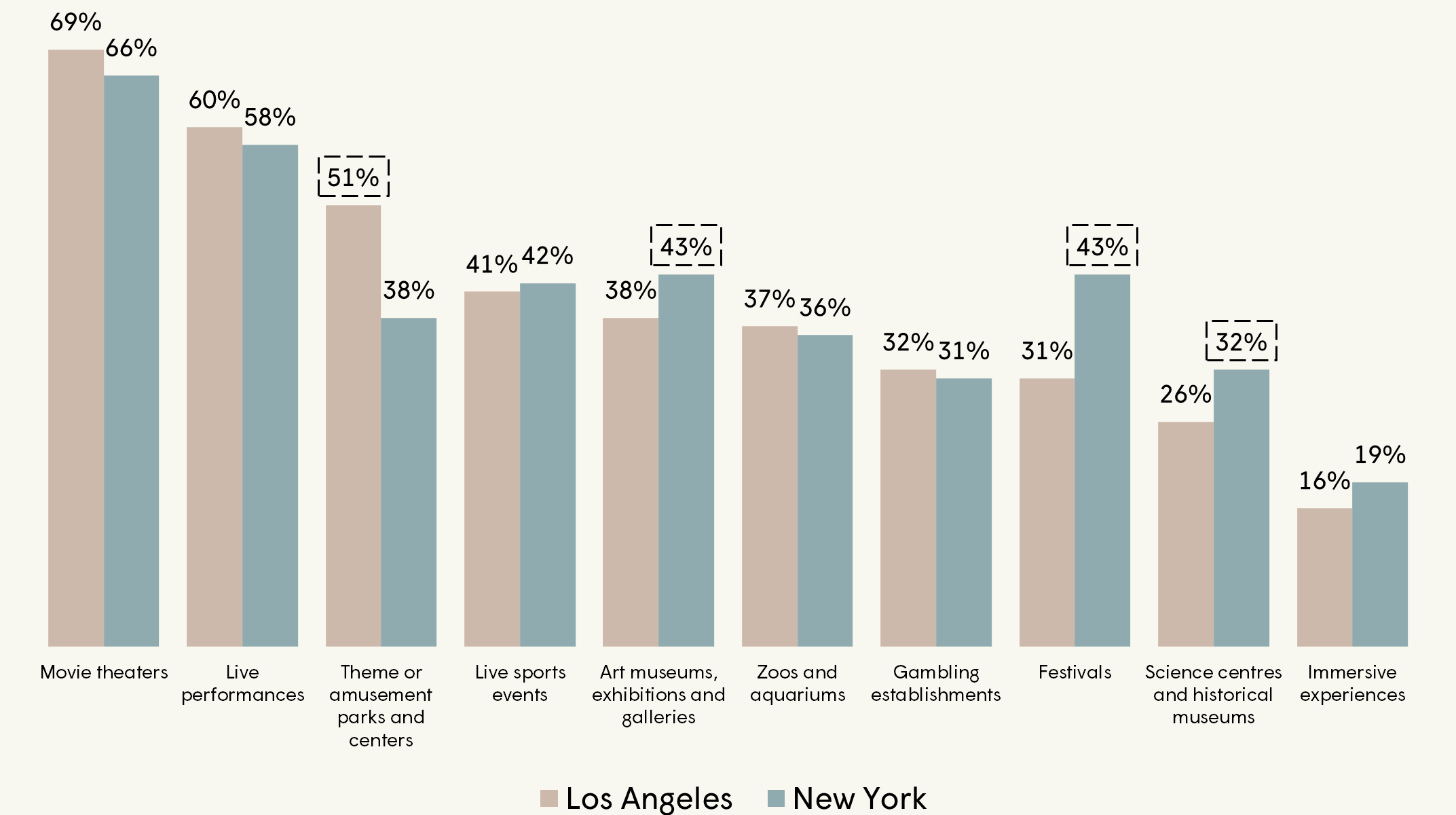New York vs. Los Angeles: How do these two entertainment giants compare?

When it comes to entertainment, two cities in the United States stand out unmistakably: New York and Los Angeles. These urban giants, with respective populations of nearly 20 million for New York and 13 million for Los Angeles, embody the cultural and economic vitality of the country. While both are major players in the industry, they offer distinct entertainment consumption dynamics that are essential to understand for a successful market entry.
A look at their unique characteristics and populations
New York, the cultural heartbeat of the United States, is one of the largest and most dynamic markets in the country. The city stands out for its unmatched variety of entertainment offerings, ranging from the Broadway theater scene to world-renowned museums and major sporting events. Los Angeles, on the other hand, is positioned as the world capital of cinema, with its iconic film studios and a deeply rooted film industry that plays a key role in the local economy. The city also boasts a diverse entertainment landscape, including theme parks, museums, live performances, coastal recreation activities, and zoological and botanical parks.
These distinct features contribute significantly to the attractiveness of both cities, making them top tourist destinations: New York welcomes between 30 and 35 million visitors annually, while Los Angeles receives between 25 and 30 million.
Although these tourist flows are promising for a new entertainment concept, successfully entering these markets requires a deep understanding of local consumer behavior. Local audiences will be the first drivers of success for a new offering, allowing it to later expand its reach to domestic and international tourists.
In terms of sociodemographic profiles, both cities exhibit a similar age distribution among their populations. However, several distinctive elements set them apart and are worth noting:

What are the differences in entertainment consumption?
Both cities are home to a vast audience of entertainment consumers:

However, these consumers have distinct entertainment consumption habits depending on the type of offering:
Entertainment activity penetration rate by market

The key differences between the two markets can be seen in the consumption of:
Theme parks and amusement parks
Entertainment consumption in this segment is significantly stronger in Los Angeles compared to New York. The city is home to nearly 15 iconic theme parks, such as Disneyland Resort in Anaheim, Universal Studios Hollywood, and Six Flags Magic Mountain, which attract millions of visitors annually. In contrast, while New York has a few large parks, such as Six Flags Great Adventure in Jackson, Coney Island, and Nickelodeon Universe Theme Park, its market is less diverse (5 to 10 parks).
Festivals
Entertainment consumers in New York have a much higher appetite for festivals than those in Los Angeles. The city is teeming with festivals of all kinds—music, dance, film, art, photography, theater, and more—throughout the year, catering to a wide variety of audiences. Some of the most prestigious include the Tribeca Film Festival and Governors Ball. However, what truly sets New York apart is its multitude of street fairs and local parades, which add to the city’s vibrancy and reflect its diverse ethnic communities. While Los Angeles also hosts major festivals, such as Coachella, it has a lower density of smaller-scale events.
Museums and exhibitions
Whether science centers, historical museums, or art museums, exhibitions, and galleries, New York dominates in terms of museum attendance. The city boasts an impressive concentration of approximately 500 museums, including some of the world’s most prestigious institutions, such as the Metropolitan Museum of Art (5.4 million visits/year), the Museum of Modern Art (2.8 million visits/year), the Solomon R. Guggenheim Museum (861k visits/year), and the Whitney Museum (768k visits/year). Conversely, while Los Angeles has a noteworthy offering of over 200 museums, it does not match the density or global reputation of New York’s cultural institutions.
How to successfully establish a presence in these two markets?
Effectively launching a new entertainment concept in New York or Los Angeles requires a thorough understanding of the local landscape. A successful strategy must consider not only market differences but also the profiles and entertainment consumption habits of local audiences. These factors can significantly influence how a given concept is received and consumed.
In this context, testing a concept at a local scale before a full rollout is an optimal strategy. This approach helps validate audience engagement and identify specific expectations regarding the concept itself (e.g., theme, duration, level of interaction, storytelling style), visit logistics (location, pricing, group composition, timing, seasonality), and the most effective promotional tactics (channels, key messages). These insights are crucial for fine-tuning the strategy based on local market motivations, maximizing the chances of success.
Two additional elements are essential for a successful market entry:
Analyzing local competition
New York and Los Angeles are highly competitive markets. Securing a foothold amid the abundance of existing entertainment options is a significant challenge, and some concepts fail right from launch. In this context, an in-depth competitive analysis is essential. It should consider multiple factors, such as the positioning of existing offerings (concept, location, marketing, distribution), and help understand their key success factors. This analysis enables the development of a strategy tailored to the local environment, leveraging the differentiating aspects of a new concept compared to what consumers already have access to.
Choosing a strategic location
The choice of location is a critical determinant of an experience’s success. In cities as vast as these, factors such as transportation accessibility, population density, local demographics, commercial rental costs, and the concentration of competing entertainment offerings vary significantly by neighborhood. All these elements must be carefully considered to ensure commercial success. Notably, in a sprawling and traffic-heavy city like Los Angeles, travel times play a crucial role in audience decision-making. In New York, the most vibrant and accessible neighborhoods are likely to be the most effective for attracting a broad audience.



